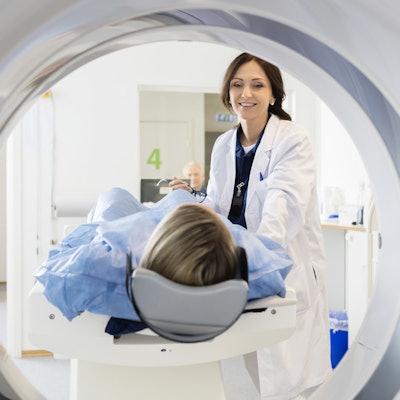
A survey of healthcare consumers in the U.S. sponsored by enterprise imaging firm Intelerad Medical Systems found that 64% either trust or are neutral on the use of artificial intelligence (AI) technology for medical imaging applications.
Conducted online in July 2021 by the Toluna Group, the survey reached 1,094 adult U.S. healthcare consumers who have received medical imaging services, according to Intelerad.
Other key findings include the following:
- 79% of respondents reported they trust or are neutral in a diagnosis by a radiologist assisted by an AI application.
- 59% of respondents aged 55 and over were much more likely to trust diagnoses assisted by AI as opposed to solely relying on it (22%). The younger the individual, the more likely they are to trust it, according to Intelerad.
- 88% of respondents trust or are neutral about AI's role in making appointments.
- 86% trust or are neutral about AI organizing a radiologist's workload by flagging questionable abnormalities.
- Only 19% of respondents believed they received care supported by AI, while 24% did not know if they had received AI-supported care and 58% believed they had not. The younger the respondent, the more likely they were to believe that AI played a role in their care; only 4% of patients 55 and over believed that they had received AI-supported care, Intelerad said.
- 60% of respondents believe that AI will perform over half of radiology services in five years, and 75% believe it will in the next 20 years.
- 8% of individuals think AI will account for 100% of services in the next five years; 19% believe AI will handle all interpretations by 2042.
Intelerad noted that the overall positive sentiments among healthcare consumers diverge from the current uptake of AI in radiology. The American College of Radiology (ACR) Data Science Institute reported last year that only 33.5% of radiologists are currently using AI as part of their practice. Furthermore, only about 20% of those who weren't utilizing AI planned to purchase AI tools in the next one to five years.


















